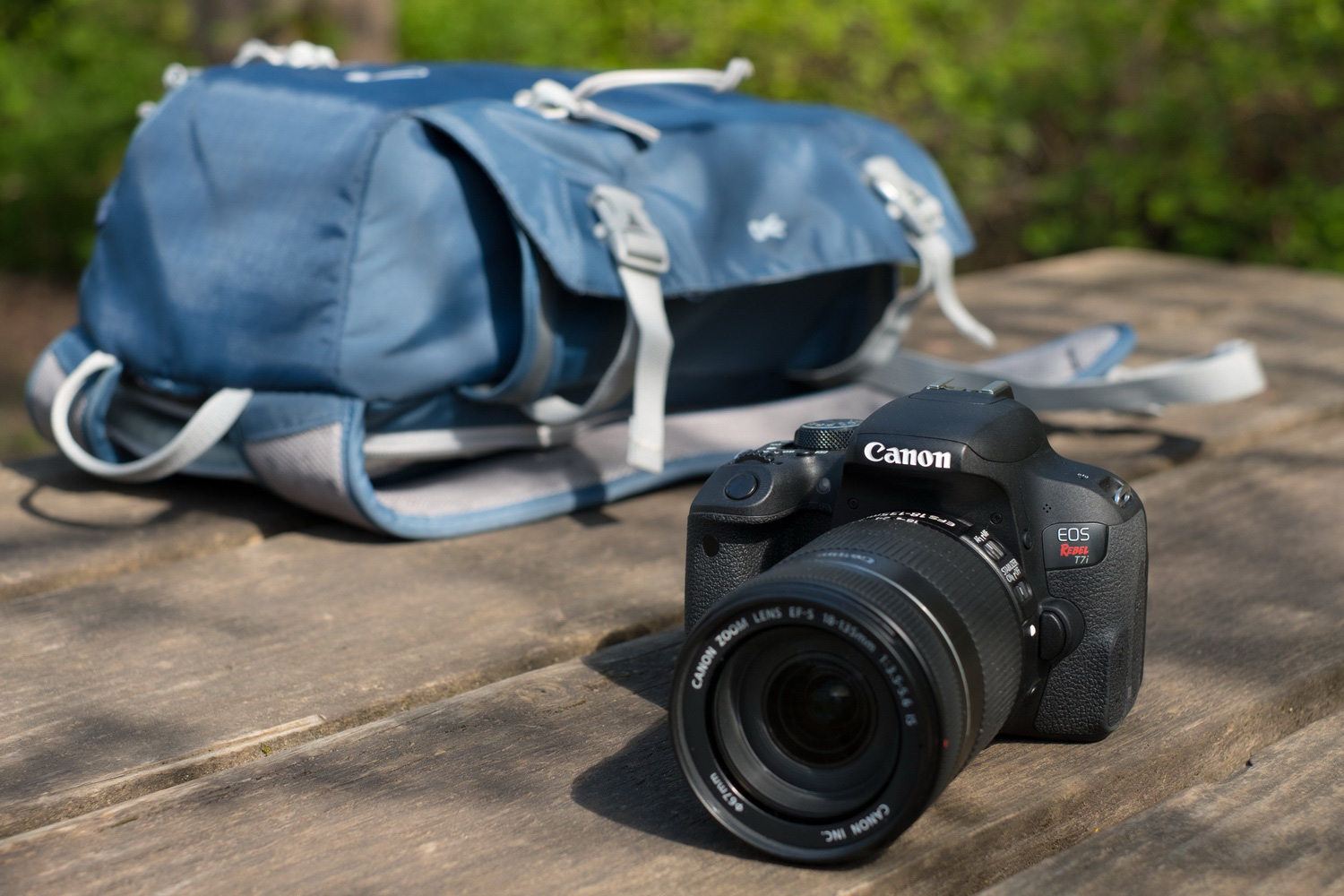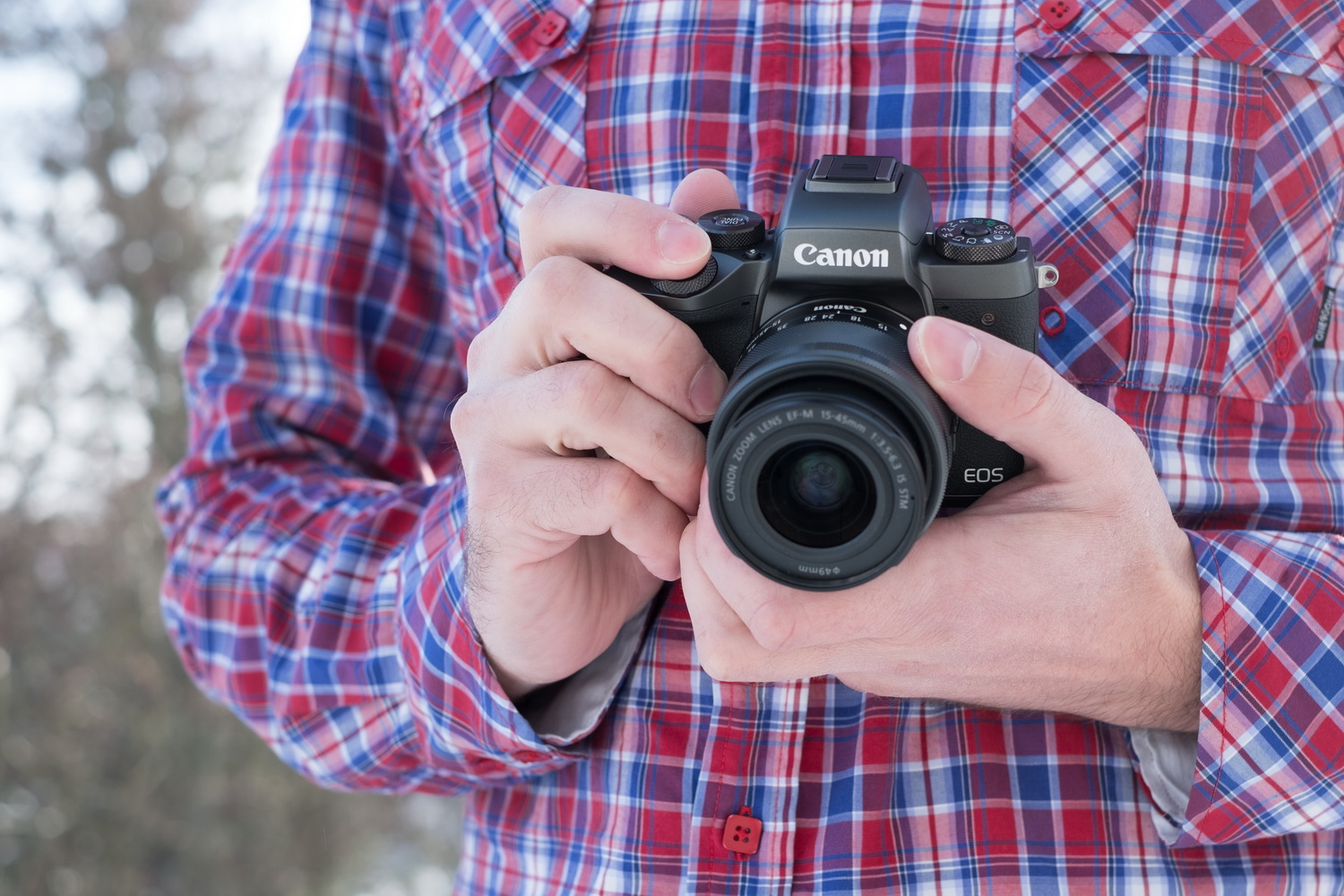Canon has been a respected brand in cameras for decades, and they continue to produce outstanding products for beginner, enthusiast, and professional photographers.
Although most known for its DSLRs, Canon has stormed into mirrorless over the past few years with its EOS M and EOS R lines. These cameras offer the same image quality and many similar features of its DSLR line in smaller, lighter bodies. Canon’s mirrorless cameras still have some growing up to do, which is the why the 5D Mark IV, a DSLR with a fast and precise autofocus system, is still our top pick. However, mirrorless is the future, and we doubt it will be long before a Canon EOS R camera supplants the mighty 5D.
At a glance
- Best Canon camera: Canon EOS 5D Mark IV
- Best entry-level Canon DSLR: Canon Rebel T7i
- Best Canon mirrorless camera: Canon EOS R
- Best entry-level Canon mirrorless camera: Canon EOS M5
- Best Canon compact camera: Canon G1 X Mark III
Best Canon camera: Canon EOS 5D Mark IV

Why you should buy this: Performance like a souped-up muscle car with images that impress
Who’s it for: Serious enthusiasts and professionals
Why we picked the Canon EOS 5D Mark IV:
The Canon EOS 5D Mark IV sports a 30.4-megapixel full-frame sensor that churns out impressive still images, while the 61-point viewfinder autofocus system is both fast and accurate. And while higher resolution cameras tend to be on the slow side, the 5D Mark IV can shoot continuously at 7 frames per second. We are also impressed with its low light performance.
Live view shooting is also snappy thanks to Canon’s Dual Pixel AF (DPAF) tech, which puts fast, phase-detection AF points directly on the sensor, just like a mirrorless camera. While DPAF also works great for video, videographers may pause at the heavy crop factor in 4K mode, and the lack of support for 4K output over HDMI. Still, for the hybrid shooter who only occasionally needs 4K video, the 5D Mark IV is a good choice.
All of that tech is protected beneath a weather-sealed, magnesium body that’s covered in physical controls and a large, comfortable grip. As a full-frame camera, it’s big, but well balanced, and is actually a bit lighter than its predecessor. Since launching in 2017, the 5D Mark IV now sells for significantly less than its original price, and even now includes a battery grip for free. There’s never been a better time to buy this camera.
Read the Canon EOS 5D Mark IV review
Best entry-level Canon DSLR: Canon EOS Rebel T7i

Why you should buy this: A budget-friendly DSLR that’s worth getting excited about
Who’s it for: Beginners and enthusiasts
Why we picked the Canon EOS Rebel T7i:
Most budget DSLRs are no-frills cameras that get the job done with little fanfare, but the Canon EOS Rebel T7i grabbed our attention with solid image quality and a very capable, 45-point viewfinder autofocus system. The DSLR uses a 24-megapixel APS-C sensor that captures excellent results for this class. But what’s perhaps even more surprising was the performance, offering excellent autofocus combined with a 6 fps continuous shooting that’s unusual for a DSLR in this price range.
As a Rebel camera, the T7i has fewer controls than the likes of the 5D Mark IV, including only one command wheel. The simplified layout helps make the camera more approachable to new photographers, however, as does the revamped menu system with the new guided mode, which walks new users through the various settings. The fully articulating touch screen offers another way to control the camera, and is also perfect for selfies and vlogging.
While the camera can’t shoot 4K, video shooters will appreciate the speed and smoothness of Dual Pixel AF, which makes tracking moving subjects a breeze.
But if the Rebel T7i is good, the just-launched T8i should be even better. We haven’t got our hands on one for testing yet (which is why our pick, for now, is still the T7i), but based on specs alone, the T8i offers faster performance, 4K video, and Eye AF. If you can, wait for the first reviews on the T8i, but if you can’t the T7i is a good option — and as the older model, a cheaper one.
Read the full Canon EOS Rebel T7i review
Best Canon mirrorless camera: Canon EOS R

Why you should buy this: Full-frame quality and Canon glass in a smaller size
Who’s it for: Enthusiasts and pros
Why we picked the Canon EOS R:
Canon’s first attempt at a full-frame mirrorless camera takes several of the features the EOS 5D Mark IV and crams them into a smaller, lighter body. The EOS R offers the same 30.3-megapixel full-frame sensor with Dual Pixel AF, but performs a bit faster at 8 fps (or 5 with continuous autofocus). That means the same image quality as the 5D Mark IV in a smaller, less expensive body.
While the EOS R has a significant size advantage, shooting with it doesn’t feel like unfamiliar territory for previous Canon users, as it mixes design language from Canon’s DSLRs and its smaller EOS M mirrorless series. The EOS R still benefits from a large grip and tilt screen, while a new multi-touch function bar is also included. The camera is also compatible with Canon’s EF-mount DSLR lenses via an adapter, and adapted lenses performed just as well as native RF-mount ones in our tests.
Compared to Canon’s DSLRs, the EOS R manages to fit a lot of tech into a smaller body, but things like dual memory card slots are missing. The EOS R also lacks in-body image stabilization, a feature commonly found on competing mirrorless cameras. Fortunately, many of Canon’s new RF mount lenses are optically stabilized.
The R won’t be Canon’s top mirrorless for long, however. Canon is developing the EOS R5, the answer to the R that includes stabilization, dual card slots, and even 8K video. Canon hasn’t yet shared the launch date, however, so for now, the R is still the best Canon mirrorless camera.
Read the full Canon EOS R review
Best entry-level Canon mirrorless camera: Canon EOS M5
Why you should buy this: A relatively big sensor, built-in EVF, and ample control in a small body
Who’s it for: Enthusiasts and beginners
Why we picked the Canon EOS M5:
While some of Canon EOS M mirrorless cameras have recently been overshadowed by its full-frame R series, the EOS M5 brings what fans love about the company’s crop sensor DSLRs into a more mobile package. This 24-megapixel camera offers good image quality and low light performance; it won’t match the quality of a full-frame sensor, but it will be plenty for most beginners and aspiring enthusiast photographers. Dual Pixel AF, like everywhere that we’ve seen this Canon technology, is another highlight, with fast and accurate focusing for both stills and video.
Wrapped in a compact body, the M5 still manages to fit in an electronic viewfinder and a tilting LCD screen. It is a nice step up from cheaper M series models, and offers dual command dials among other direct-access control. This gives it some room to grow into for quick-learners who may otherwise outgrow an entry-level model.
The Canon EOS M5 is getting on in years, but this means you can get it for a much lower price. However, if you’re interested in higher-resolution stills, 4K video, and faster performance, you should look into the new EOS M6 Mark II. Otherwise, the M5 remains a great choice for beginners as a well-rounded mirrorless camera that isn’t too hard on the budget.
Read the full Canon EOS M5 review
Best Canon compact camera: Canon PowerShot G1 X Mark III

Why you should buy this: A DSLR sensor in a travel-friendly camera
Who’s it for: Travel photographers who want to add a more mobile camera to their kit
Why we picked the Canon G1 X Mark III:
When a DSLR or even a mirrorless camera is simply too big to take with you, the Canon G1 X Mark III delivers the quality you want in a form factor you can actually carry. The APS-C sensor is the same size and 24MP resolution as in the M5 and Rebel T7i above, but the body is that of a point-and-shoot, making it ideal for advanced photographers who don’t want to haul around a ton of gear all the time. The G1 X Mark III combines that sensor with a built-in 24-72mm (full-frame equivalent) f/2.8-5.6 lens. Dual Pixel autofocus is also included, so you should be able to shoot quickly from the hip for all those sneaky street shots and candid moments.
Canon also brought some DSLR controls to the G1 X Mark III, and it also has an electronic viewfinder and hot shoe. 4K video is missing, but that’s likely forgivable for customers in this camera’s target demographic. Like most advanced compacts, however, there’s a premium price for that small size. You can buy a Rebel for less money, but not with an f/2.8 lens, and certainly not in a form factor that can fit in a jacket pocket.
Read more about the Canon PowerShot G1 X Mark III
Looking for more? Check out the best Black Friday camera deals we found also visit our curated deals page to find the best deals you can get on Black Friday.




